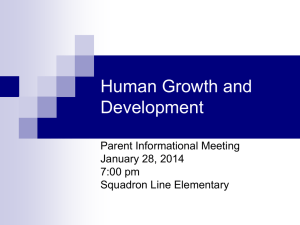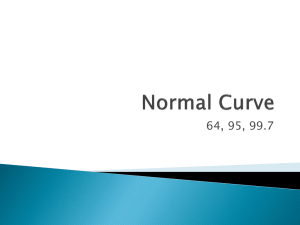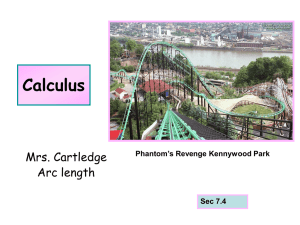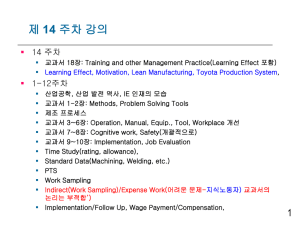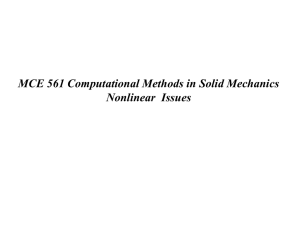Nonlinear growth curves in developmental research
advertisement
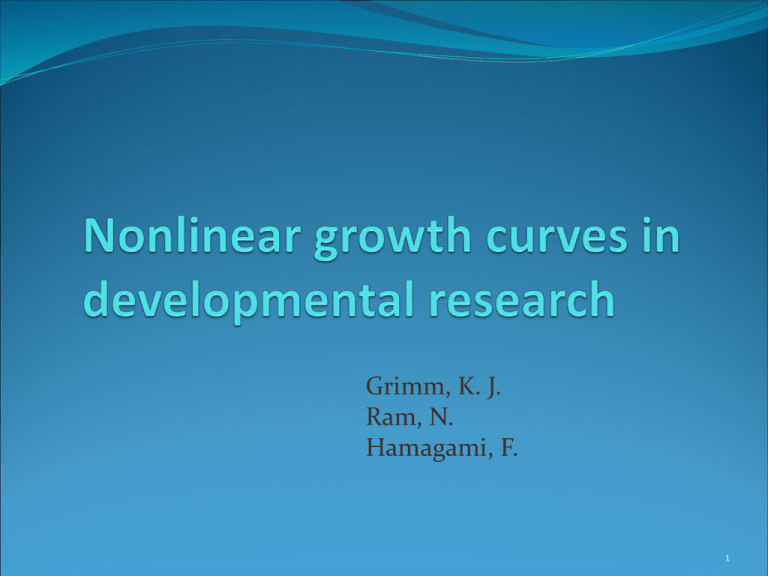
Grimm, K. J. Ram, N. Hamagami, F. 1 Road Map The role of growth models in developmental studies Growth curve analysis Linear growth curve Nonlinear change patterns An example—The Berkeley Growth and Guidance Studies Discussion 2 Growth models in developmental research The focus of developmental research In psychological studies The use of growth model in developmental research Many applications only model linear change patterns 3 Mathematics achievement in grade 7-12 in the longitudinal study of American Youth (Muthen, B., & Khoo, S-T., 1998). 4 Plots of height for 5 girls Plots of height for 5 boys 5 However, many developmental processes are more complex Acknowledgement of the nonlinearity But limited to polynomial models, such as quadratic and cubic changes The gap between the models and change patterns Models should provide appropriate representations of developmental theory There may not yet be strong theories 6 Growth curve analysis Linear model At least 3 time points for each individuals Differences between SEM and multilevel approaches SEM--latent variables: (µi, σ2i), (µs, σ2s); factor loadings: 1, (tk1)/k2 Multilevel approach: i n n u 0i is s u1i u oi ~ N (0, i2 ) u1i ~ N (0, s2 ) cov ariance: i , s 7 Nonlinear change patterns Quadratic growth Latent basis growth Nonlinear latent curve model Additive nonlinear latent curve Multiplicative nonlinear latent curve 8 Nonlinear change patterns Quadratic growth Latent basis growth 9 10 Piecewise model 11 Nonlinear latent curve models Gompertz Logistic 12 Richards curve Also termed as generalized logistic curve A=o, K=1, B=1.5, Q=v=0,5, M=0.5 A: the lower asymptote K: the upper asymptote B: growth rate 13 Nonlinear latent curve models Further classified as Additive nonlinear latent curve Multiplicative nonlinear latent curve 14 Example Data The Berkeley Growth Study and Berkeley Guidance Study Ages between 3 and 19 years old 155 males and 167 females 15 Models The Preece-Baines model h1n: the individual adult height; h2n: the height at the age when the individual grows fastest; s0n: the growth rate during childhood; s1n: the growth rate during puberty. 16 Results 17 Height_ Rate_ puberty child Height_ Adult Height_ Puberty Rate_ Child Rate_ Puberty 0.99 -0.51 Rate_ Age_ puberty puberty -0.2 -0.4 0.55 0.55 0.58 -0.78 -0.44 18 Gender Adult height: girls < boys (b=-13.53) Height during puberty: girls < boys (b=-11.47) Rate during childhood: girls > boys (b=.02) Rate during puberty: girls > boys (b=.13) Time experienced puberty: girls earlier (b=-2.11) 19 Discussion Advocate the use of multiplicative nonlinear curve Additional change models Multiphase models Latent difference score models Drawbacks: The approximation method to reduce the problem of convergence Require more data/measurement occasions 20 Comments/thoughts for future research The lack of the measurement part Comparisons between multilevel IRT model and 2-stage growth curve model. It is impractical to develop a specific model for individual characteristics. Is there a more general model fitting human development? Comparisons between IRT approach and SEM approach in longitudinal studies. Minimum numbers of sample sizes, observation occasions.. 21

